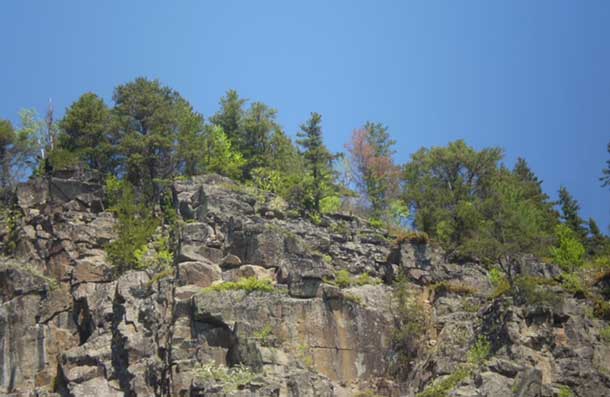
Yet this nature of this portrait of affairs in the States goes back in history. To a time when well known author Oscar Wilde first toured the States in1881. Wilde was clever.
Upon entry in New York he was eagerly quizzed by Customs. Asked if he had anything to declare. “Well…only my genius,” WIlde answered. It was his tongue in cheek candour that left a lasting impression. The Agents were so impacted by his reply it was written down. Posted in an office and preserved for others.
Wilde’s passport was subsequently stamped. He then embarked on a series of lectures mapping points from Colorado to Illinois. Niagara Falls to Boston, and, Philadelphia. With Canadian stops in Quebec. Because Wilde knew Charles Dickens admired Montreal.
But as an observer, of Americans, Wilde wrote, “everyone seems in a hurry to catch a train. In a state not favourable to poetry or romance. Had Romeo or Juliet been in a constant state of anxiety about trains and the question of return tickets Shakespeare could not have given those lovely balcony scenes both its poetry and pathos.”

However Wilde’s cheeky nature held a fascination for a 19th century public who quite applauded Wilde’s bravado. That easily materialized in the swelling assemblies of listeners who gathered at his talks.
Once when asked, as Wilde climbed aboard a train, what he’d be reading? Wilde in his rapid action reaction chirped, “of course, I never travel without my diary. One should always have something sensational to read on the train. That is where I write entries like these. To live is the rarest thing in the world. As most people simply exist. That is all.”
Wilde’s travelogues include, “I am not young enough to know everything–yet. Thus, one must be oneself, because everyone else is already taken.”
Irish poet W.B. Yeats initially encountering Wilde, in 1888, in London, wrote about, “the pure astonishment Wilde delivers.” Yeats was 23. Wilde aged 34. Yeats was overwhelmed with the incredible generosity WIlde showed to a fellow Irishman. Yeats forever remembered, “Wilde’s amazing, hard brilliance of mind.”
While travelling on our own trains, and reflecting, how Wilde started as journalists there remain in the aftermath of Wilde’s historic visit a cherished aspect, which American still thrives in busy U. s. cities.
It’s their first off– morning motions–picking up fresh copies of daily newspapers. Wilde knew it well: ink pressed into hard copy news is still a major medium for an American populous at large.
Only this week, in a national paper, a well re researched Special on Canada’s Boreal Forest. Co-authors Scott Weidensaul and Jeffrey Wells wrote on a true North magnificence that is the backbone of living within Canada’s borders.
Here’s a portion of their Boreal Songbird Initiative on the resources, and outright wealth, of our Boreal.
Stretching from the interior of Alaska across Canada to Newfoundland, and sandwiched between the Prairies and the Arctic, North America’s Boreal is a mind-boggling 1.5 billion acres. It is truly bigger than the vast rain forests of Brazil and the Congo. Despite a relentless pace to develop, and industrialize, there remains a remarkable 80% remains intact and wild.
The authors are very keen on seeing, relishing, a continuance in what may be a stretch calling it a North American Garden of Boreal Eden, however, they push forward in their newspaper feature.
Of course, Corporations have their eyes on the land. Plentiful minerals, timber, oil and gas, and the hydropower potential of its untamed rivers. Though the stakes become particularly vivid at this time of year as spring slides into summer. Billions of birds (an estimated number up to 3 billion) arrive from the Tropics to spend their summers in Canada. Raising their young before returning in fall. Certainly, we all reap this bounty.
As promoters of what’s fascinating to them, and as a mandate in preservation through both science and a respected environmentalist touch, they know their stuff. They paint a wide and admirable canvas composed of nesting habitats, and, Nature’s regeneration to come. They go on.
The birds of the Boreal reach into your backyard. The white-throated sparrow tuning up its lilting song at your feeder. The Swainson’s thrush that spent the winter in Argentina rests near your mailbox before going too much farther on to nest in Newfoundland. Whether you enjoy warblers in a park, or scanning the Chicago waterfront for ducks, or, shaded paths watching vireos and tanagers they have crossed an immense swath to arrive in a northern forest
And possibly the clarion call once promoted in Rachel Carson’s classic book Silent Spring is echoed by Weidensaul and Wells.
It is unthinkable to imagine our world without the abundant migratory birds we have come to expect. Besides the Boreal is one of the largest sources of surface freshwater on earth. It’s wild rivers rushing to oceans, drives global oceanic currents and marine fisheries.
The chorus of their substantial essay echoes two features we, as Canadians, have traditionally enjoyed. Knowing these things as, an inherent, phenomenal part of the magnificent natural network in our seasonal existence. A delight we share experience with every footstep into our woodlands.
Plus, the resolve to preserve what is most profound. A continuance in understanding and reliably delivering a nesting and natural atmosphere for international flights of creatures in the sky who rely on our talents in caring for their regular homecomings.
As a former colleague studying mathematics once rather profoundly commented to me, “You do realize the miracle of birds is they are so special. One of the few creatures on earth, I know who can build their homes without hands.”
Otherwise to re-read passages of fairly resounding words penned by Homer in his ancient book the Odyssey, “wings of the wind, though moved by the wind, with a golden sunlight transforming them. They, in time, keep our company for only a short while before vanishing.”
Ronn Hartviksen






